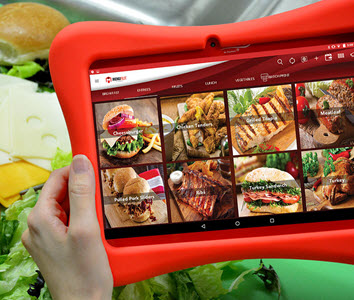How a Menu Command Center Can Keep Everyone in the Loop
Posted on 6th Jul 2018

According to a study reported in Quick Service Restaurant (QSR) Magazine, 34 percent of fast food restaurant workers at a franchise fast-food restaurant—those taking drive-thru orders or who are otherwise on the front lines—rarely receive direct communications from corporate headquarters about the brand, its culture, menu or operational updates, or similar critical information from corporate leadership.
Further, half of these fast food restaurant workers said they had no idea of the company’s vision for growth in the near or long-term future. In most cases, it has never been communicated to them.
“That’s largely because it can be difficult to reach front-line employees,” writes Elizabeth Cogswell Baskin in the August 2013 issue of QSR. “With high turnover, it doesn’t make sense to give company e-mail addresses to this group, especially since they’re not on a computer at work. And because they’re in various locations, they don’t even share common geography.”
This makes communications with these fast food restaurant workers difficult. And because these are the very people that meet with your customers and ultimately represent the company brand, not having these people in the loop can be very risky for a fast-food organization, especially those with multiple locations.
What typically happens in such situations, according to Baskin, is that corporate management teams communicate with franchise managers and then those managers spread the word to frontline workers who are instructed to tell other frontline workers.
But a lot of this information can get lost in the shuffle. It’s like playing Telephone: you tell someone a story, they tell the story to the next person, and the next person tells the story to someone else. By the time it reaches the last person, more likely than not, it’s an entirely different story.
Along with the consistency of messaging, Baskin adds that message timeliness can also be a problem. While the day shift, for instance, may have been told of an operational change, it may not reach the night shift for a night or two, if then.
“Without direct communication from corporate—particularly about the company vision, values, operational issues, and brand promise—important nuances can be lost in translation,” writes Baskin. “What’s more, research indicates that [these] employees interpret a lack of communication from corporate as evidence that the company does not value or respect them.
Not only are these fast food restaurant workers less engaged than they could be, but they also have a poor understanding of what the brand represents. “[This means] the crewmembers, making the food and interacting with customers, are ill equipped to deliver the desired customer experience.”
It’s because of situations like this, not only in fast-food franchises, but in many types of foodservice outlets, that corporate managers are turning to kitchen automation systems .
These are cloud-based systems designed to communicate with all staffers instantly via computers or other devices in real time, just about anywhere they are located. This ensures everyone is on the same team: staffers stay aware of what the goals are, what the chain is trying to accomplish, and—with the kitchen automation systems—menu updates, food regulations, safety, security, and other critical information.
For more information on DayMark’s kitchen automation systems with MenuCommand™, contact a DayMark representative at 800-847-0101.
Source: Fast Food Employees Crave Corporate Communication - QSR


